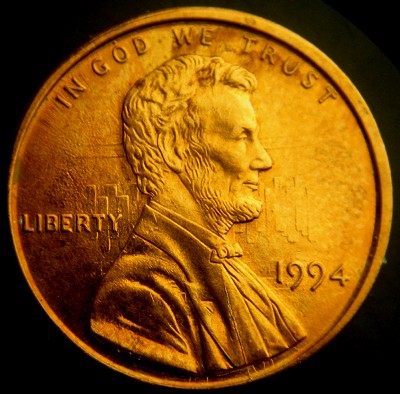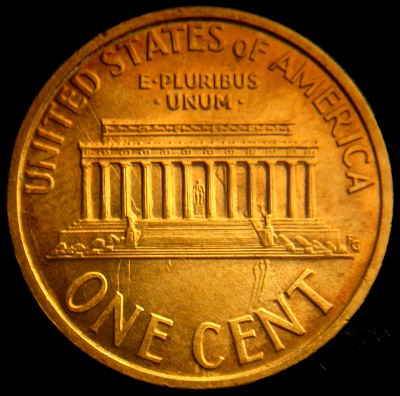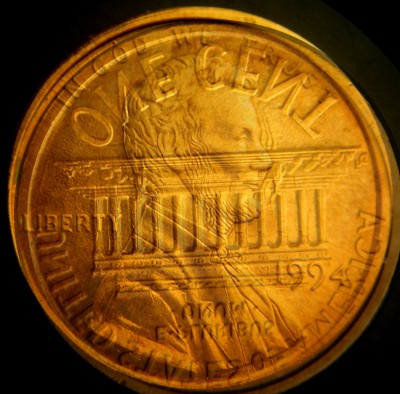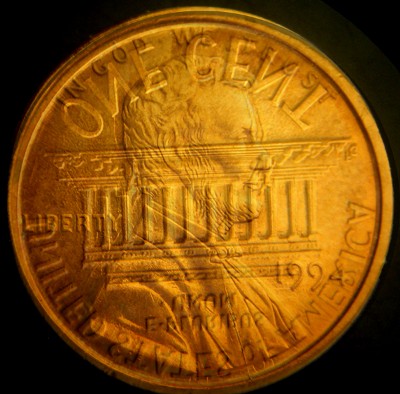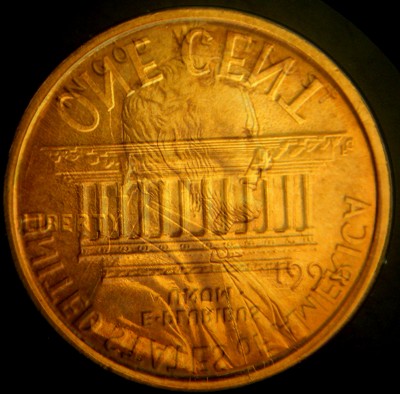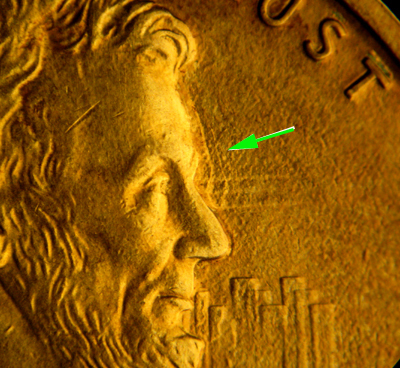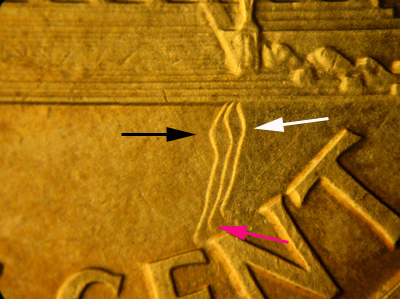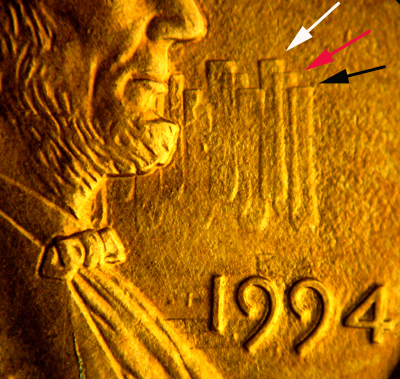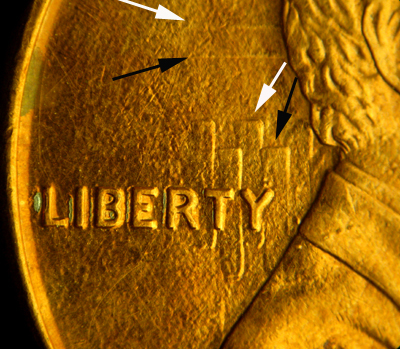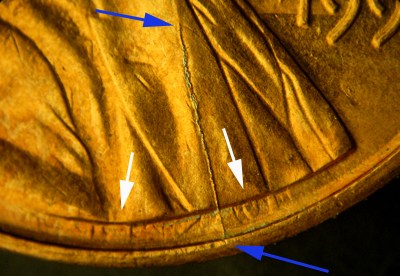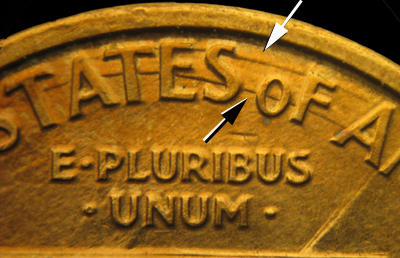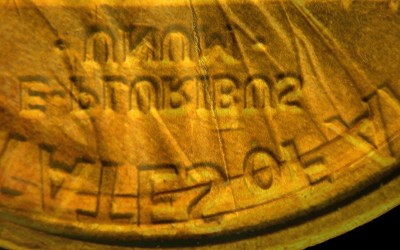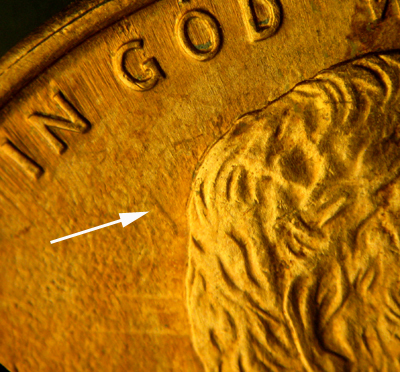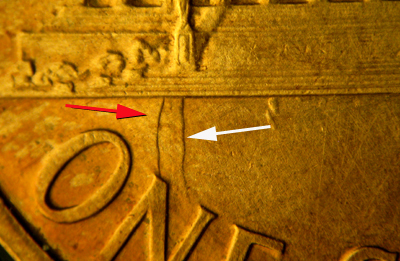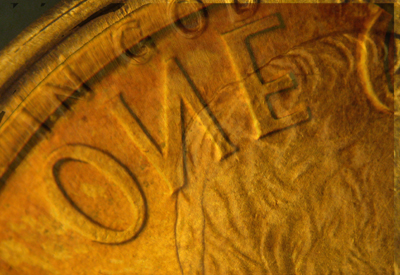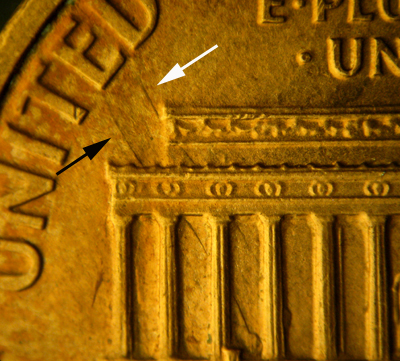CCL(TI)-1c-1994-01
While this die clash on a 1994 Lincoln cent is listed under the counter clash (Type I) category, it much more than that.
The clash can also be thought of as being atypical (ADC) as well for it is very strong has multiple staggered clashes and two of those clashes occurred with a tilted die.
This coin comes to us from Daville E. Williams of Florida.
The first overlay pictured below appears to be the last clash that occurred in this event and the most off centered of the three clashes.
From the positioning of the clash marks and the way the marks overlap each other, it can be determined that this was the middle die clash and the weakest of the three meetings.
The first clash was the most centered of the three clashings. Notice that there is a slight rotation to the clashing of the dies that is not seem in the strike. This is a fairly common occurrence and the exact cause of this difference in rotation between the strike and the clash is still unknown.
The picture below shows the counter clash (indicated by a green arrow) that was presumably left by the third clashing of the dies. The three lines at the bottom of the counter clash are from the reverse die and were produced by the bottom or base line of the Memorial building.
The lines above the N of CENT were generated by Lincoln’s forehead during the clash. The white arrow indicates the first clash, the red arrow the second clash and the third arrow the third or last clash. When the third clash occurred, the first two clash marks, since they are now an unintentional design element, were transferred back to the obverse die, slightly offset from the original design element. This offset is the result of the hammer die moving during each separate clash.
Notice the offset in direction of the three sets of clash marks in the picture below. Once again, the colored arrows indicate the three separate die clashes.
Oddly enough, the middle or second clash may have been tilted to the east for it does not appear on the left side of the obverse.
The picture to the left shows the clash marks left by the words STATES OF underneath Lincoln’s bust. Due to the tilt of the hammer die on the first and third clashing, partial letters were transferred to the obverse, while the lower bust line was transferred through the words STATES OF.
Since the third clash was offset the most, this clash left the majority of the clash marks (indicated by a black arrow), while the first clash left very little in the way of marks.
The overlay shows the relative positioning of the dies during the third clashing.
Notice the die crack on the obverse die (indicated by blue arrows). This coin was struck with early die state dies and normally a die crack of this size would not occur in dies so new. The crack may have occurred during the clashing event. In any case, both dies, because of the severity of the clashings and the obverse die crack were more than likely retired from striking coins. This would make the particular coin a fairly rare find.
The second or middle clash had a hammer die that was tilted in a different attitude. This is evident by the clash mark left by the N of ONE on the obverse die under the IN GOD and the back of Lincoln’s head. The picture to the left show the faint clash mark.
The corresponding clash marks can be sen on the reverse die below the left URN. Notice that the third clash mark is not present in the area due to the tilt of the hammer die when it clashed for the third time.
The overlay shows the position of the two dies when they met.
Multiple die clashes, especially when they are not abraded and on MS quality coins make for a very interesting study of just what happens in an event such as this.
I did not show all the die clash marks left on this coin only the major clash marks. There is part of the digits in the date, the roof line of the Memorial building and also clash marks left by the cornice that are not pictured. However, what I have pictured gives you an idea of the complexity of this clash and hopefully a better understanding of this error type.
